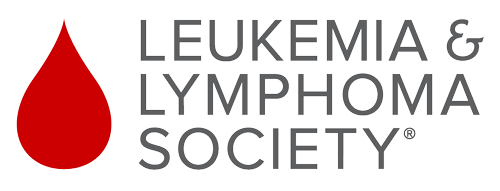I'd like to know what causes TKI withdrawal syndrome and why do some people get it so much worse than others.
- by Tracey F
from USA
Transcript:
Tracey F:
Hi, I’m Tracey from Florida. I’d like to know what causes TKI withdrawal syndrome and why do some people get it so much worse than others. Thanks.
Dr. Mauro:
Hi, I’m Dr. Michael Mauro from Memorial Sloan Kettering Cancer Center in New York. And on behalf of the LLS (Leukemia & Lymphoma Society). I’m answering a question from Tracey this morning regarding withdrawal syndrome from tyrosine kinase inhibitors or TKIs. Tracey’s question was, what is the basis or the reason why patients get TKI withdrawal syndrome? And why is it that some people have it perhaps worse than others? It’s a very interesting question.
I always view this as a good problem. We have the opportunity now in chronic myeloid leukemia (CML), to view our goals of treatment as a functional cure, which is again, a remarkable achievement and the basis for treatment is tyrosine kinase inhibitors which are oral medications, which have been available for more than 20 years.
In the majority of patients with sufficient treatment, people can undergo a treatment free remission (TFR) attempt where they move on to see if they may not need treatment indefinitely. It’s under the right circumstances after the right amount of treatment and with the right depth of remission for the right amount of times, it’s very specific. And also requires specific monitoring where patients get their disease monitoring more frequently, not surprisingly.
And when we started to do this, we did notice withdrawal syndrome. What is withdrawal syndrome? When someone has stopped their medication, one might expect that the side effects if they had any, which generally are minimal, on TKI therapy and CML would go away. You stop the medication; the side effects go away. Some patients have temporarily, generally after a few weeks being off medication when the medicine is fully washed out of their system; I would call the inflammatory symptoms or arthritic symptoms. They may have joint pains, fatigue, other musculoskeletal complaints, as we call it, mechanical symptoms is probably the best way to view it. It’s temporary, it can be somewhat bothersome, and it can be intense, rarely.
Tracey’s question was why some more than others? That’s a little bit hard to know, I’m not sure we have a way to measure the likelihood or the intensity of it. If you look at studies which have been performed, we record about 20 to 30% of patients who stopped treatment, particularly those who have stopped Gleevec(R), where we have the most information may experience this. The great news is that this almost always fades and disappears. Again, the onset is probably after a few weeks of stopping, it may last for a few weeks.
Generally, it is rare to non-existent to have this be an ongoing issue, where patients may feel like, “Wow, I’d rather take my medication again, to make these side effects go away.”
With regards to the reasons, we do have a little bit of an insight and that Gleevec and other medications, imatinib being the generic name. So imatinib, nilotinib, dasatinib and bosutinib, the medicines people may generally be thinking of discontinuing if they’re in deep remission. All have other targets beyond BCR-ABL, which they inhibit, meaning other things that they do in the body, not dangerous things necessarily, but things that they may be inhibiting or affecting. If you then would stop that, and essentially take your foot off the brake or foot off the gas depending on your analogy, you may now have a counter reaction where whatever was being blocked is now overreacted. And one potential target is something called KIT.
Now this is the reason why medicines like imatinib, or Gleevec work in other cancers. In other settings it is a good thing, but by blocking KIT in patients with CML, and then not blocking them when they stopped their medication. They may have inflammation that’s related to KIT. KIT is an enzyme that is common in blood cells and may have a fair bit to do with inflammation and reactive cells and inflammation. So that makes sense.
Based on this hunch, we often suggest people try things like antihistamines or other anti inflammatories because if the inflammatory pathway is activated, you can often quiet it down and manage quite nicely through this withdrawal syndrome.
So, to summarize, withdrawal syndrome is not uncommon, about one in five patients may experience it. It’s fortunately limited and should not be intense in most cases, although it can be. The reason why it’s more intense than others is unknown. It may be related to things that CML medications do that aren’t harmful, but that are missing when people stop treatment. And some of the easy treatment options we can offer are things like antihistamines or anti inflammatories.
And one last point I’ve begun to notice is that sometimes when people switch medications, particularly, we have a new medication called asciminib, which is very specific and somewhat different than our other TKIs but also a very significant advance in the field. When patients switch to that medication, they essentially are stopping one of the classic TKIs and I’ve seen some of the same symptoms there.
So, withdrawal syndrome may happen when you switch medications too. So, talk to your doctor. Don’t hesitate to ask questions and I hope I’ve answered Tracey’s question and thank you for your attention.


